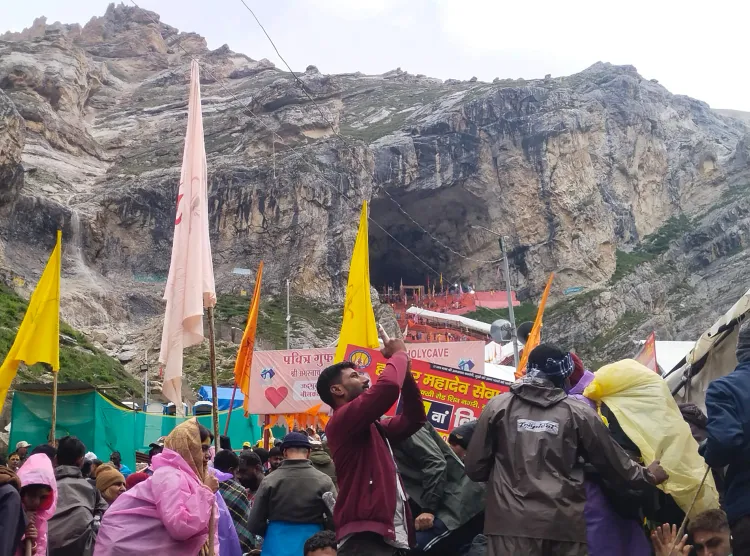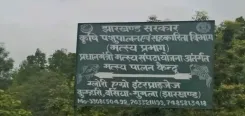Why are More Yatris Choosing On-Spot Registration for the Amarnath Yatra?

Synopsis
Key Takeaways
- Increasing number of Yatris opting for direct registration in Kashmir.
- Traditional routes and the significance of the Chhari Mubarak journey.
- Heightened security measures in response to recent events.
- Multiple routes available for Yatris to reach the cave shrine.
- Significant dates marking the conclusion of the Yatra.
Srinagar, July 27 (NationPress) An increasing number of Yatris are making their way directly to Kashmir to engage in the ongoing Amarnath Yatra, surpassing those who begin their journey in guided convoys from Jammu. Officials reported that over twice as many Yatris are opting for direct, on-the-spot registration at the two base camps and transit camps across Kashmir compared to those arriving in escorted groups from Bhagwati Nagar Yatri Niwas in Jammu.
Most of the Yatris choosing this direct route primarily travel by air, contributing to the growing numbers preferring road travel from Jammu to the base camps. Today, another group of 2,197 Yatris departed Jammu in two escorted convoys to the Valley. The first convoy, consisting of 39 vehicles and carrying 573 Yatris, left at 3.31 a.m. for the Baltal base camp, while a second convoy of 62 vehicles with 1,624 Yatris departed at 4.01 a.m. for the Pahalgam base camp.
The holy mace of Lord Shiva, known as the ‘Chhari Mubarak’, is traditionally kept inside the Amareshwar Temple located at the Dashnami Akhara Building in the Budshah Chowk area of Srinagar. This journey of the Chhari Mubarak is crucial as it marks the significant milestones of the Amarnath Yatra.
The Bhumi Pujan for the Chhari Mubarak took place in Pahalgam on July 10, conducted by a group of seers led by Mahant Swami Deependra Giri, the sole custodian of the Chhari Mubarak, who escorted it from its residence in Srinagar to Pahalgam.
In Pahalgam, the Chhari Mubarak was taken to the Gauri Shankar temple for the Bhumi Pujan before returning to its original location at the Dashnami Akhara building.
The final journey towards the holy cave shrine will begin from the Amareshwar temple in Srinagar on August 4, with the Chhari Mubarak expected to reach its sacred destination on August 9, coinciding with the conclusion of the Yatra.
Traditional Puja ceremonies will be held at various locations along the route, including Pampore, Bijbehara, Mattan, and Pahalgam, before the Chhari Mubarak arrives at the holy cave shrine.
This year, extensive multi-tier security arrangements are in place for the Amarnath Yatra, especially following the tragic attack on April 22, in which 26 civilians were killed by Pakistan-backed terrorists in the Baisaran meadow of Pahalgam.
To bolster security, an additional 180 companies of CAPFs have been deployed alongside the Army, BSF, CRPF, SSB, and local police.
More than 8,000 special commandos from the Army are assigned to ensure the safety of the pilgrims this year.
The Yatra commenced on July 3 and is set to conclude after 38 days on August 9, coinciding with Shravan Purnima and Raksha Bandhan.
Yatris can access the holy cave shrine, located 3,888 meters above sea level in the Kashmir Himalayas, via the traditional Pahalgam route or the shorter Baltal route.
Those taking the Pahalgam route will trek through Chandanwari, Sheshnag, and Panchtarni, covering a distance of 46 km on foot over four days. In contrast, those choosing the shorter Baltal route must trek 14 km to the cave shrine and return the same day after completing their darshan.
This year, no helicopter services are available for Yatris due to security concerns.
The cave shrine is renowned for its ice stalagmite structure, which fluctuates with the moon's phases. Devotees believe this structure embodies the mythical powers of Lord Shiva.








